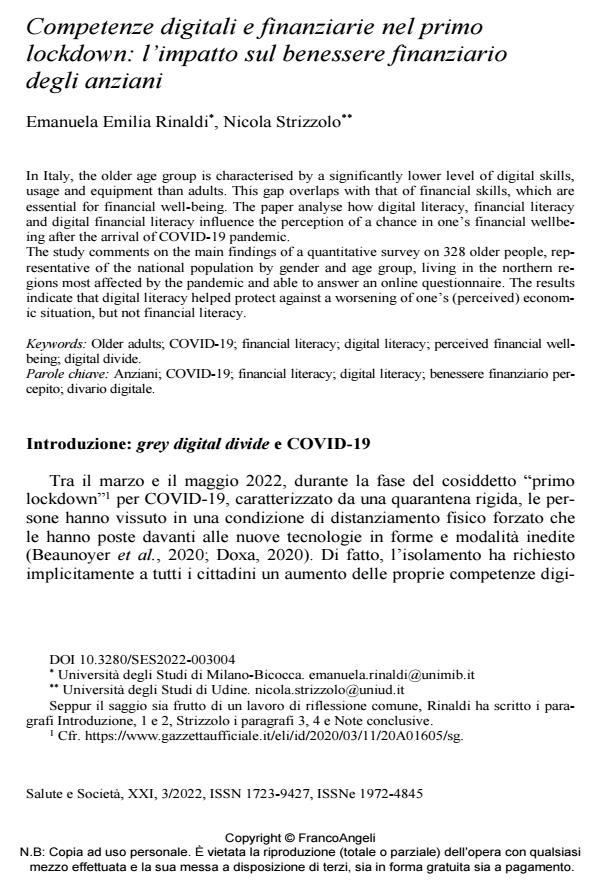Competenze digitali e finanziarie nel primo lockdown: l’impatto sul benessere finanziario degli anziani
Journal title SALUTE E SOCIETÀ
Author/s Emanuela Emilia Rinaldi, Nicola Strizzolo
Publishing Year 2022 Issue 2022/3
Language Italian Pages 17 P. 47-63 File size 427 KB
DOI 10.3280/SES2022-003004
DOI is like a bar code for intellectual property: to have more infomation
click here
Below, you can see the article first page
If you want to buy this article in PDF format, you can do it, following the instructions to buy download credits

FrancoAngeli is member of Publishers International Linking Association, Inc (PILA), a not-for-profit association which run the CrossRef service enabling links to and from online scholarly content.
In Italy, the older age group is characterised by a significantly lower level of digital skills, us-age and equipment than adults. This gap overlaps with that of financial skills, which are essen-tial for financial well-being. The paper analyse how digital literacy, financial literacy and digital financial literacy influence the perception of a chance in one’s financial wellbeing after the ar-rival of COVID-19 pandemic. The study comments on the main findings of a quantitative survey on 328 older people, repre-sentative of the national population by gender and age group, living in the northern regions most affected by the pandemic and able to answer an online questionnaire. The results indicate that digital literacy helped protect against a worsening of one’s (perceived) economic situation, but not financial literacy.
Keywords: Older adults; COVID-19; financial literacy; digital literacy; perceived financial well-being; digital divide.
- Perspectives and Experiences on eHealth Solutions for Coping With Chronic Pain: Qualitative Study Among Older People Living With Chronic Pain Annalisa De Lucia, Valeria Donisi, Ilenia Pasini, Enrico Polati, Lidia Del Piccolo, Vittorio Schweiger, Cinzia Perlini, in JMIR Aging /2024 pp.e57196
DOI: 10.2196/57196
Emanuela Emilia Rinaldi, Nicola Strizzolo, Competenze digitali e finanziarie nel primo lockdown: l’impatto sul benessere finanziario degli anziani in "SALUTE E SOCIETÀ" 3/2022, pp 47-63, DOI: 10.3280/SES2022-003004